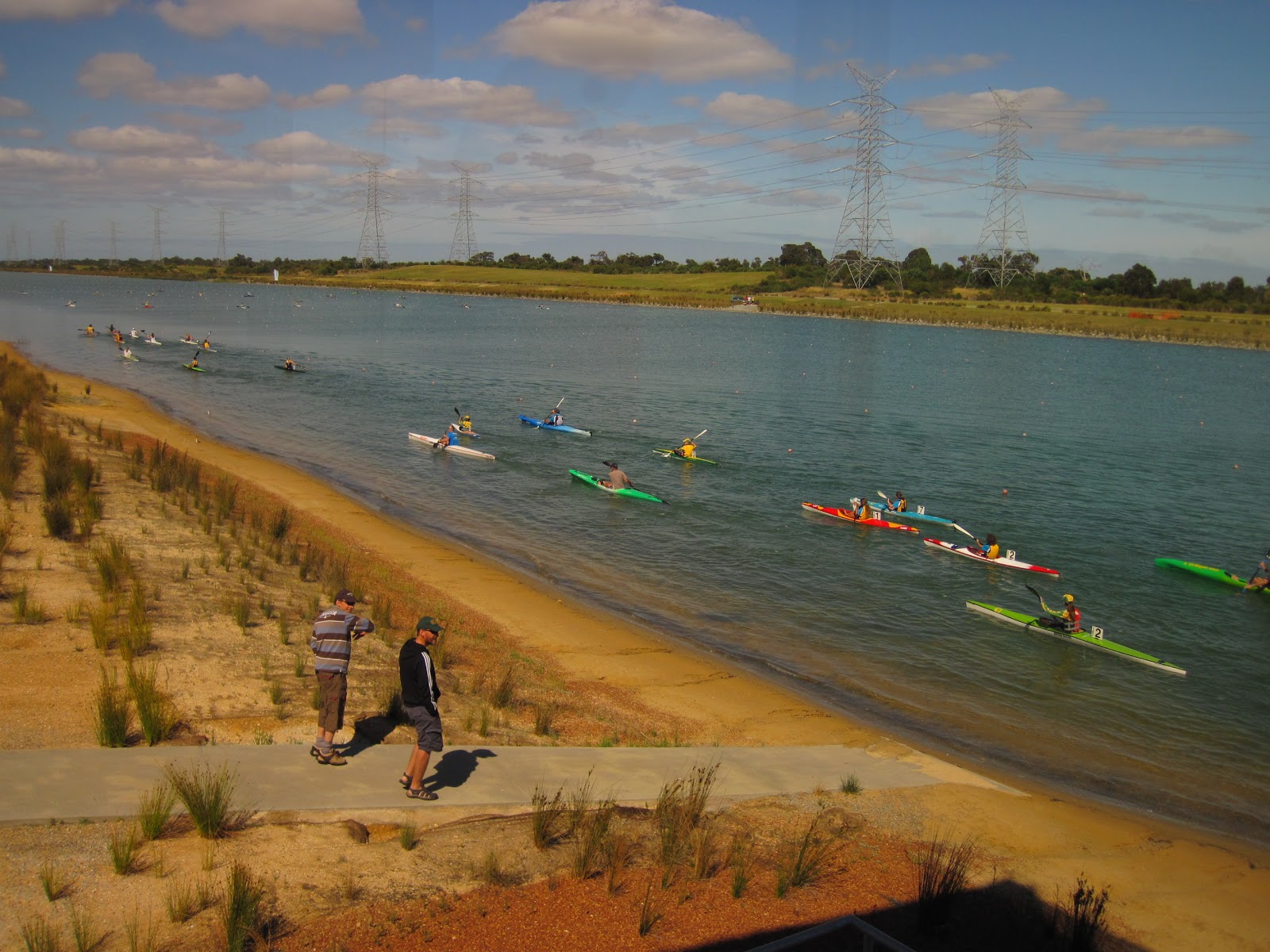I had never witnessed a kayak regatta and had the opportunity to, not only go to one, but experience it from the tower!
Background - When my son was involved in go-kart racing I had worked in the tower for the national go-kart races held in Calgary and was interested to see the organization of the kayak racing. I also do recreational canoeing and kayaking so of course, I was not going to pass this up even if it meant missing going to Rottnest Island.
The start tower at Champion Lakes and the behind scenes running of a regatta.


The end of a race. They have backups of determining the finishing order; people who watched and spotted, a timer beeper system and a video camera.
 |
A group of racers receiving their
pre-race instructions.
|
 |
| A view from the tower. |
The races run were 200m, 500m and 1000m. I walked around the complete 2000m course and viewed it from the end. A fantastic facility. At the far end was a start tower and staging area, but as on this day they were not having that distance it wasn't used.


Anyway, I learnt and saw many more details of the regatta, but I am running out of "umph" and you are maybe are not as interested in such things.
The afternoon was spent doing a road trip loop south and east and back, learning about all sorts of trees and flowers. The colors of "green" are incredible and there are so countless different types of eucalyptus or "gum" trees. It seems that even when you crush the leaves from trees that you think are the same, you get a different smell.
 |
Do you know what this is?
It is rather interesting, don't you think! |


















































